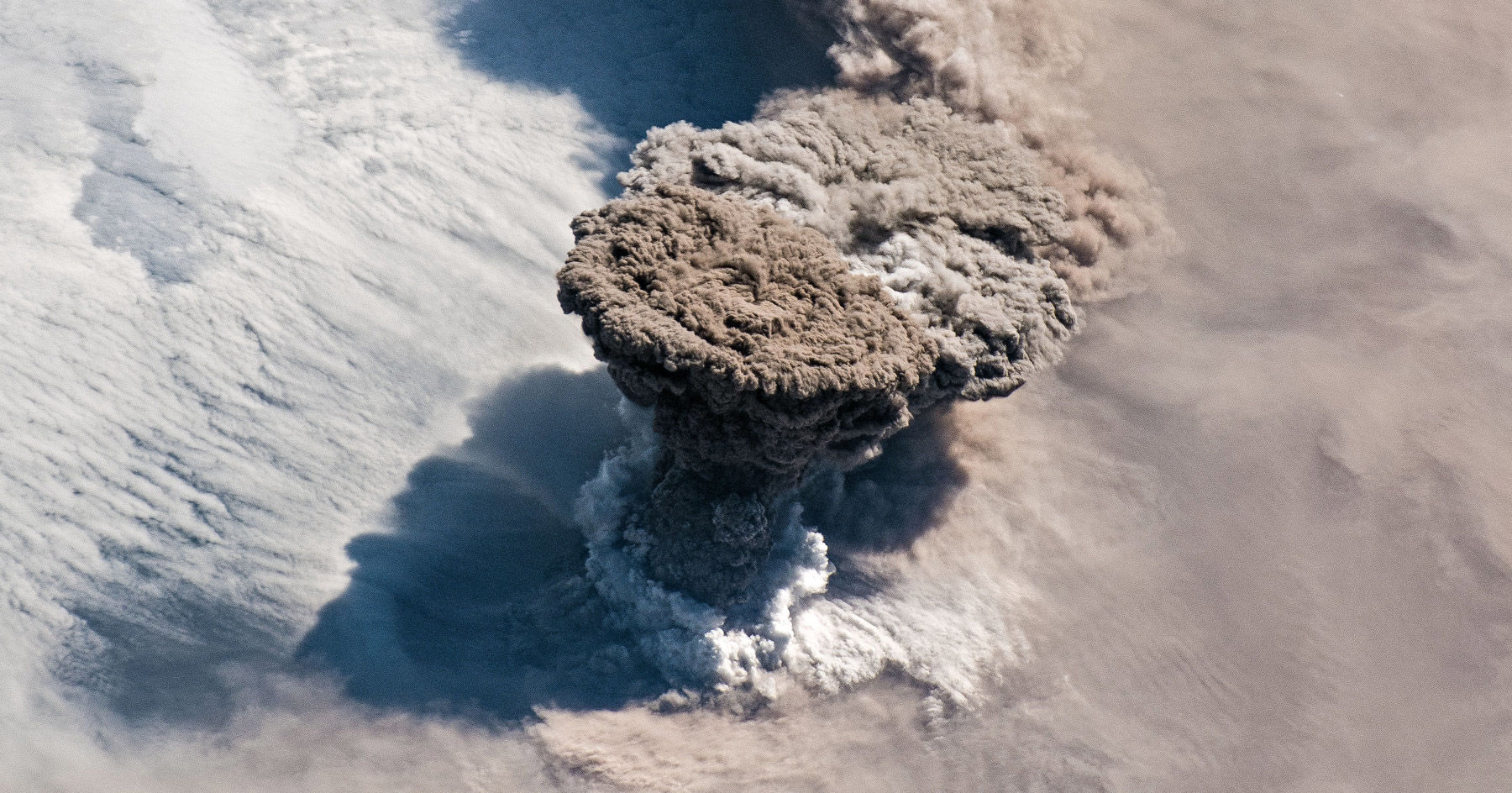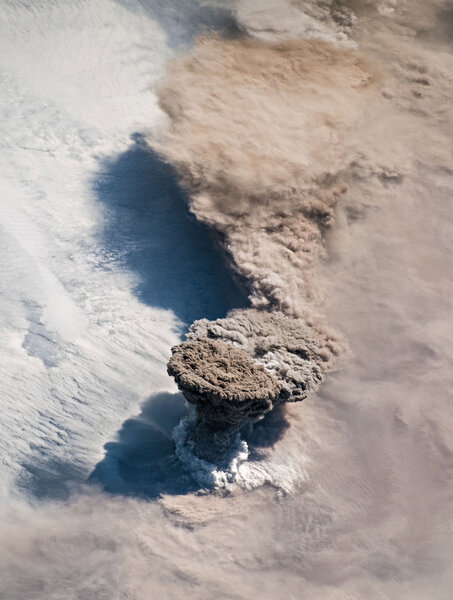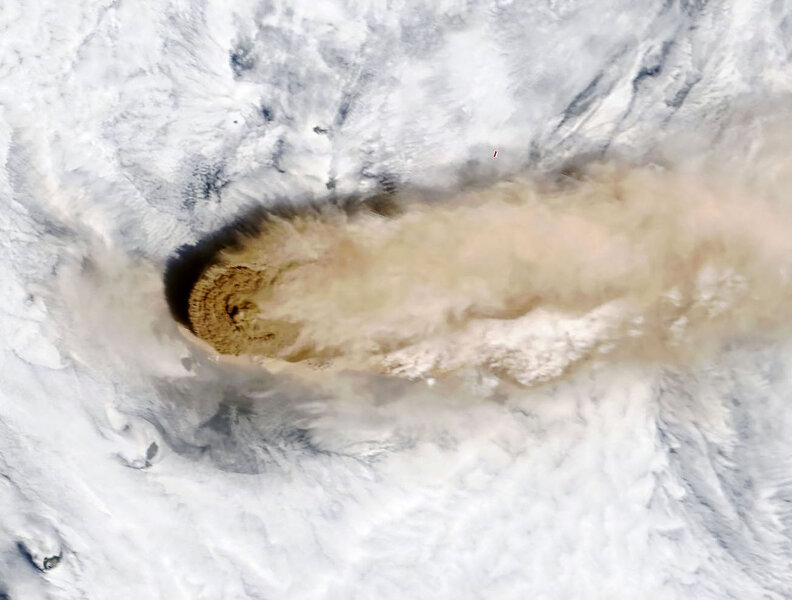Create a free profile to get unlimited access to exclusive videos, sweepstakes, and more!
A volcano blows its top, seen from space

If you like volcanoes, eastern Russia is the place to be. The Kamchatka peninsula and environs are loaded with active volcanoes that erupt quite often.
South of the peninsula is a long archipelago called the Kuril Islands, dropping as far south as Japan (in fact Russia and Japan dispute the sovereignty of some of the volcanoes in the southern part). All of these islands are the tops of volcanoes, created as the Pacific tectonic plate slips beneath the Okhotsk plate to the west. There are over 100 volcanoes there, and nearly half of them are active.
One, which you'd easily miss on a map, is called Raikoke. It's only a couple of kilometers across, and has a crater in the middle 700 meters across and 200 deep. As volcanoes go it's a fair-to-middlin' one. It erupted a couple of times in the 18th century (one of which destroyed the upper third of the island!) and again in 1924. After that, it lay quiet for nearly a century.
Then, on June 22, 2019, it blew its lid off again. Now mind you, this is not a heavily inhabited region of the world (fewer than 20,000 people live in the whole archipelago), so getting close-up pictures of the event isn't likely.
… unless you happen to include a thousand or so kilometers away as "close-up". Maybe not, but if most of that is across the vacuum of space, you still get incredible photos, like this one taken by an astronaut on board the International Space Station:
Whoaaaaaa. That's phenomenal. It was taken a few hours after the eruption, as the ISS passed over that part of the world. You can see the ash cloud rising, punching its way through the troposphere and right up into the stratosphere. The hot gas and ash plume rises due to convection (like a hot air balloon rising), and stops when the density of the air around it is the same as the density inside the plume. At that altitude it won't rise any more, but stuff still keeps coming up from underneath, so the plume flattens and spreads outward, creating the anvil shape you also see with really strong cumulonimbus storm clouds (and for the same reason).
It was also seen by NASA's Earth-observing Terra satellite, this time from nearly straight above it:
You can get a sense of the anvil, and see the prevailing winds taking the ash to the east. Some parts of the plume may have reached heights of about 17 kilometers. The plume has a lot of sulfur dioxide (SO2) in it, which got injected into the stratosphere.
Interestingly, once up there SO2 can be converted by sunlight into a sulfate aerosol, small particles that have a lot of sulfur in them. These are efficient at reflecting sunlight, so can actually cool the planet a wee bit. After huge eruptions the average temperature of the planet can drop a little… but not much, not nearly enough to keep up with how much we're warming it. The effect is temporary anyway, since these wash out of the sky in rain. And that's bad too since when dissolved in water it creates weak sulfuric acid — acid rain.
I was initially surprised to find out that the overwhelming majority of sulfur dioxide in our air is created by humans. But after thinking about it and putting it in context, this makes sense: For example, humans emit 100 times as much carbon dioxide into the air annually than volcanoes do!
A volcanic eruption is a titanic event, sowing chaos and seemingly dwarfing our own endeavors. But it's short lived, and as powerful as it may be, humans wield far more destructive forces. It's really far past time we learned better how to wield them… or sheathe them.




























